Welcome to On Verticality. This blog explores the innate human need to escape the surface of the earth, and our struggles to do so throughout history. If you’re new here, a good place to start is the Theory of Verticality section or the Introduction to Verticality. If you want to receive updates on what’s new with the blog, you can use the Subscribe page to sign up. Thanks for visiting!
Click to filter posts by the three main subjects for the blog : Architecture, Flight and Mountains.

Introduction to Verticality
Ever since humans descended from the trees and out onto the savannah, we’ve gazed upward in wonder at the sky and the stars. Until fairly recently in our history, this space above our heads was a mystery. Our ancestors would witness the diurnal movements of the Sun and the Moon, and the brilliance of a glowing sunrise or sunset. The clouds would drop water and thundering bolts of light and energy. At night, they would witness a spectacular tapestry of light-emitting dots, and connect them into elaborate shapes. The sky has been a continual source of wonder throughout our history, and we’ve spent countless hours thinking about the world we see above our heads.
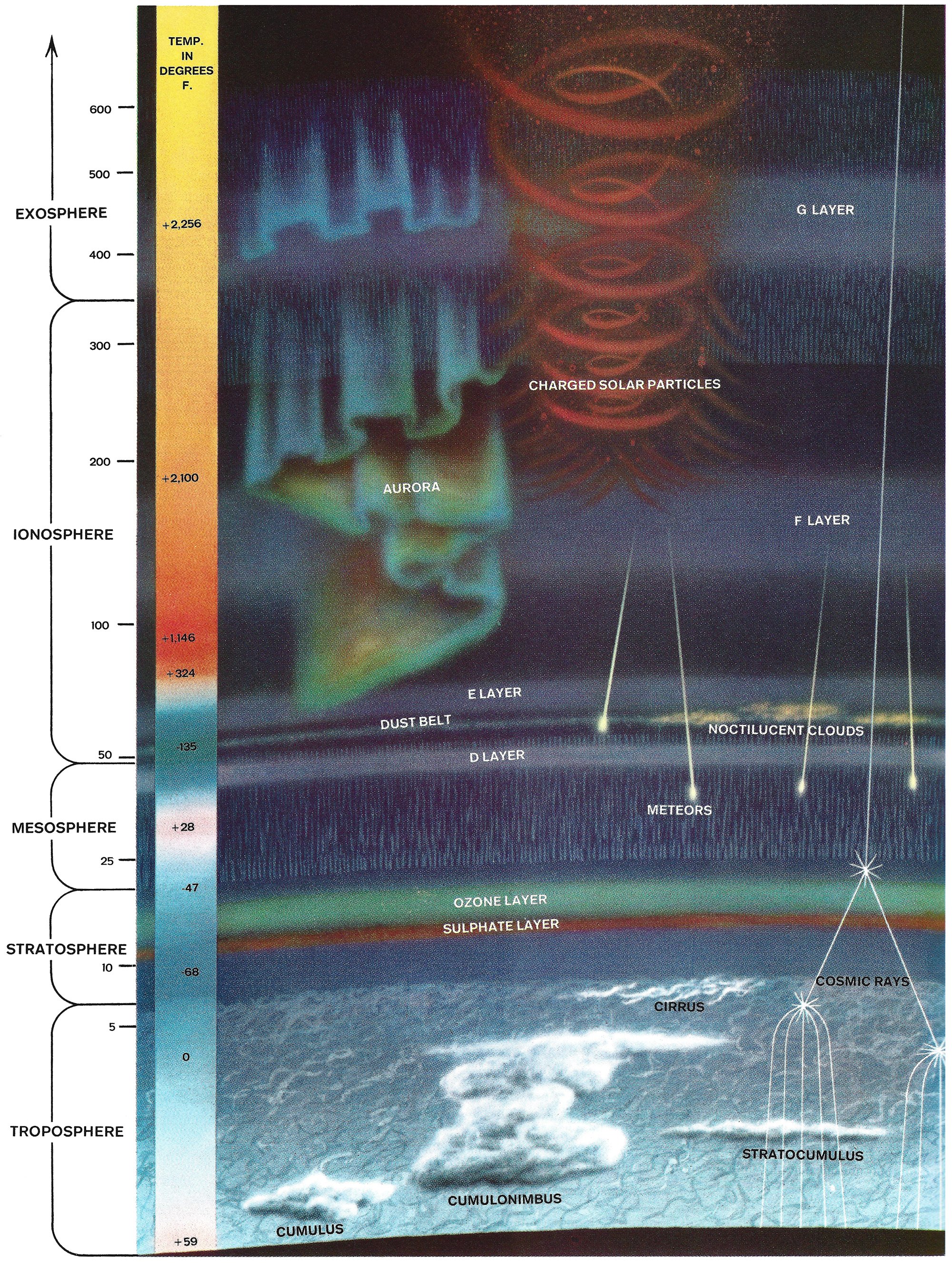
The Many-Layered Atmosphere
The above illustration originally appeared in the 1962 book The Earth from the Life Nature Library. It does a masterful job of explaining the complex layers of the earth’s atmosphere, and it puts the scale of each layer in perspective.

The Verticality of Clouds
I recently climbed Mount Saint Helens in Washington state, and the experience brought me face-to-face with the verticality of clouds. The photo above was taken just after dawn, and you can see two very different types of clouds in the sky. Just above my head was a dense, thin layer of altostratus clouds, which looked solid and dark from below. Far above this was a wispy pattern of cirrus clouds, which was much lighter in appearance. In addition to these, there were also groups of low-lying stratus clouds in the valleys below. What struck me in that moment was each of these cloud types was created by the exact same elements, the only difference was their height above the surface.
“I have found beauty … I have soared, like a bird. Oh, I cannot say how beautiful it is up there, in the sky, with the wind about me, blowing me like a feather.”
-Written by Ray Bradbury, American author, 1920-2012.
There's no sensation to compare with this. Suspended animation, a state of bliss. Can't keep my mind from the circling sky. Tongue-tied and twisted, just an earth-bound misfit, I.
-David Gilmour of Pink Floyd, English songwriter and musician, born 1946.
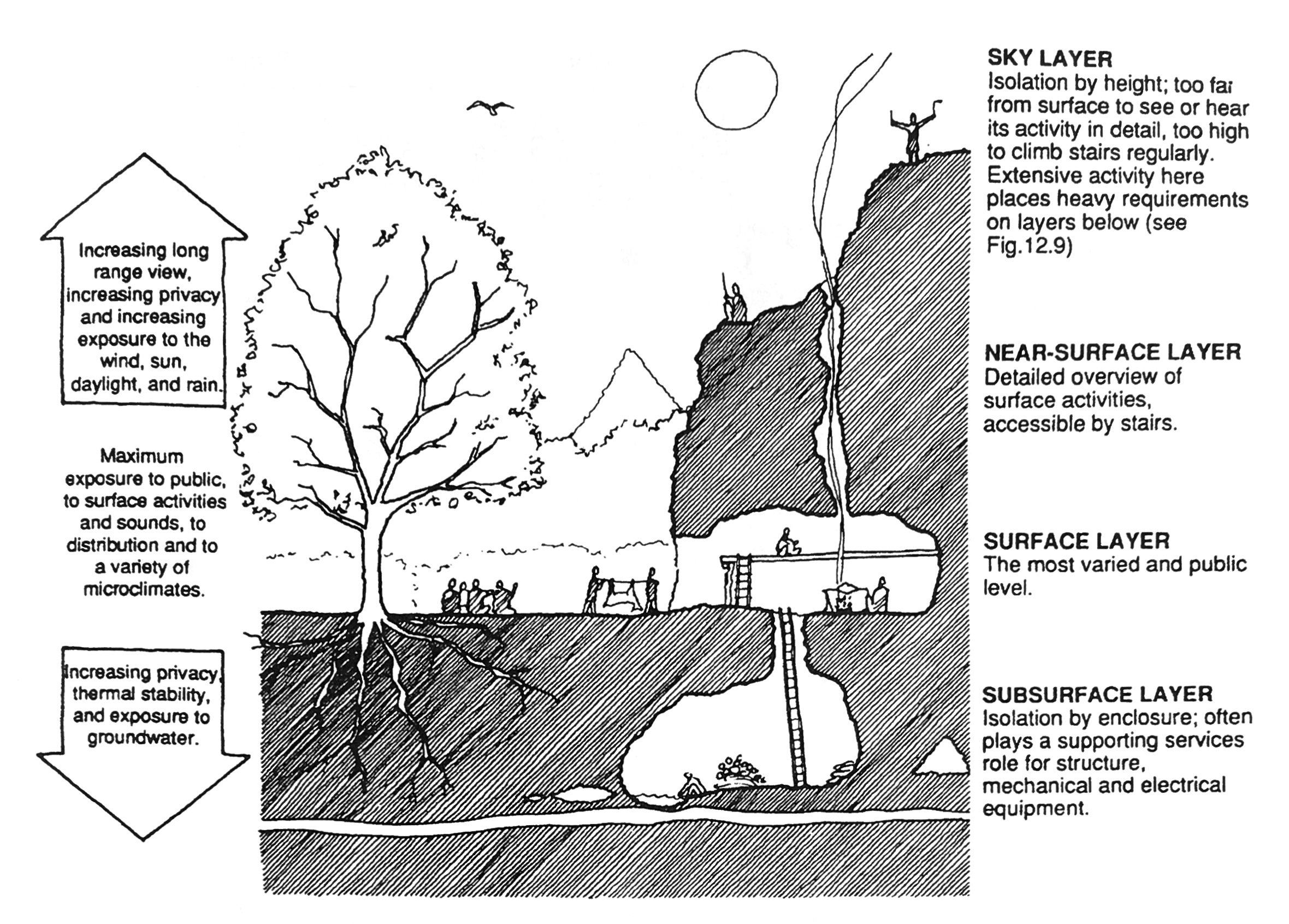
The Horizontal Layers of a Building Site
I was recently browsing through some old textbooks of mine from architecture school, and I came across this gem of an illustration in a building systems textbook from my undergrad years. This was long before I began forming my theories related to verticality, so I was quite fascinated to see a strong correlation between my definitions of the underground, the surface, and the sky to the subsurface, the surface and the sky layers shown above.
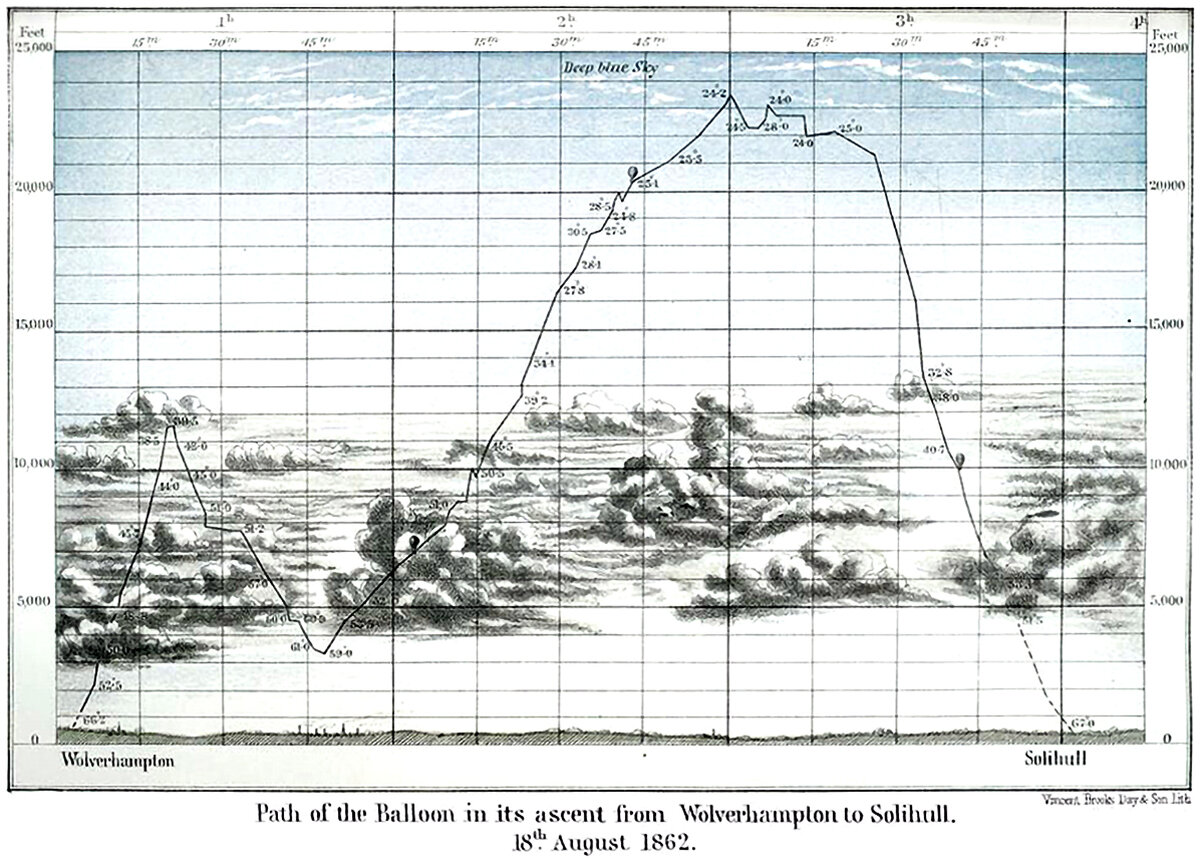
What Goes Up, Must Come Down
I love a drawing that tells a story. Here’s an illustration that does just that; it’s a diagram showing the flight path of James Glaisher’s balloon on 18 August 1862, which travelled between Wolverhampton and Solihull, just outside Birmingham in England. It’s essentially a graph that plots altitude over time, with some embellishments added for effect. The story being told is in the graph’s line, which ascends and descends just as the balloon did during its flight.

Zeus, Poseidon and Hades : The Verticality of the Greek Gods
Nearly all ancient belief systems are based on the surface, the underground, and the sky in some way. These three concepts represent something primal for humans, and throughout history we’ve attached myriad meanings and stories to the relationship between them. Typically, they’re either represented by an abstract concept or a god. An example of the former is the Christian idea of heaven and hell. An example of the latter is the Ancient Greek gods Zeus and Hades.
“Mechanical wings allow us to fly, but it is with our minds that we make the sky ours.”
-William Langewiesche, American journalist and aviator, born 1955.
“The heavens call to you, and circle about you, displaying to you their eternal splendors, and your eye gazes only to earth.”
-From The Divine Comedy, by Dante Alighieri, Italian poet and philosopher, 1265-1321.
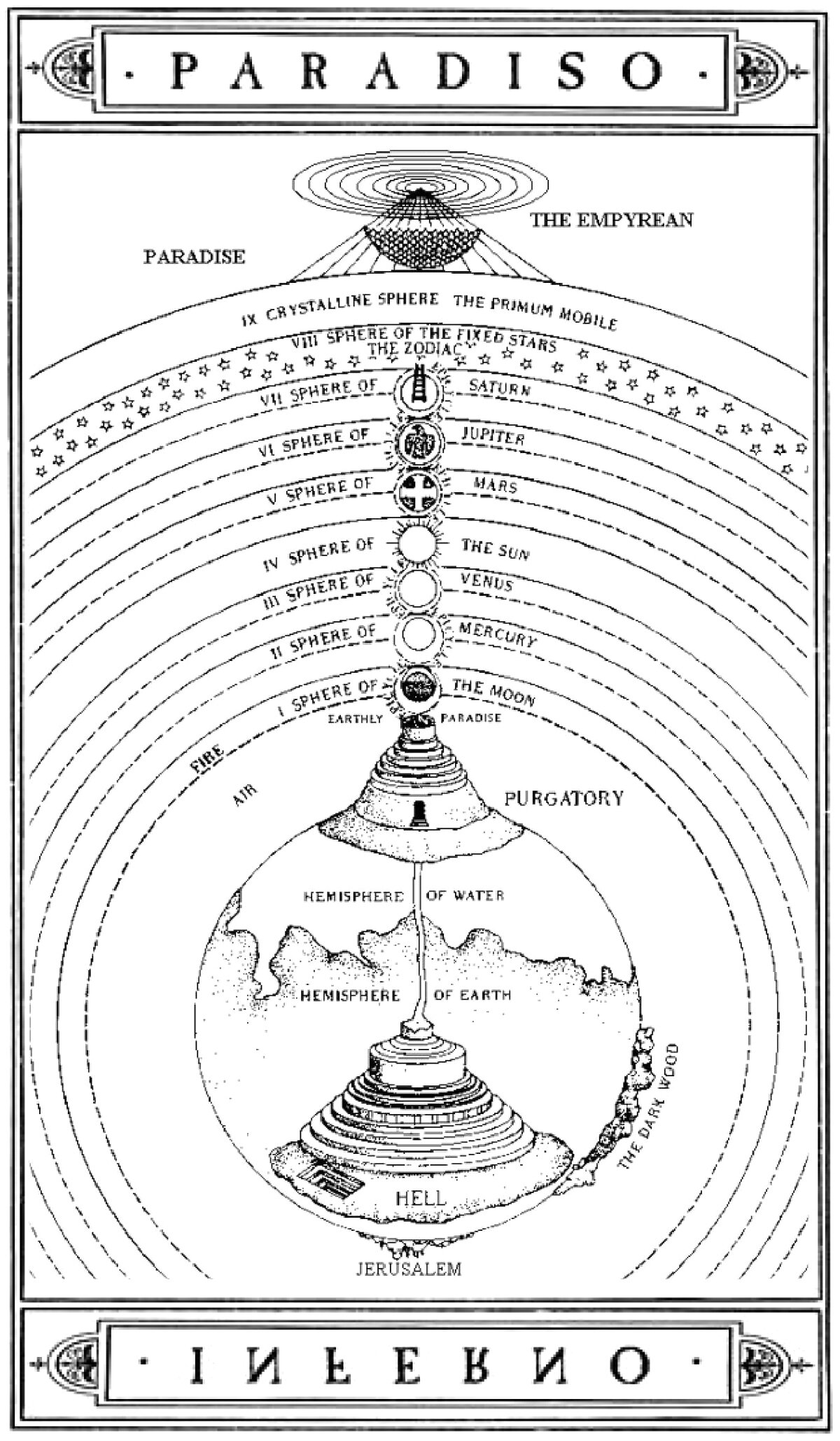
Dante’s Divine Comedy and the Vertical Worldview
Dante Alighieri’s epic poem La Divina Commedia, or The Divine Comedy in English, is widely considered one of the world’s greatest works of literature. It tells the fictional story of Dante and his soul’s experience after death. Throughout the story, Dante descends through Inferno, then ascends through Purgatorio and Paradiso. It’s a journey defined by the axis-mundi, and the entire work is rooted in verticality.
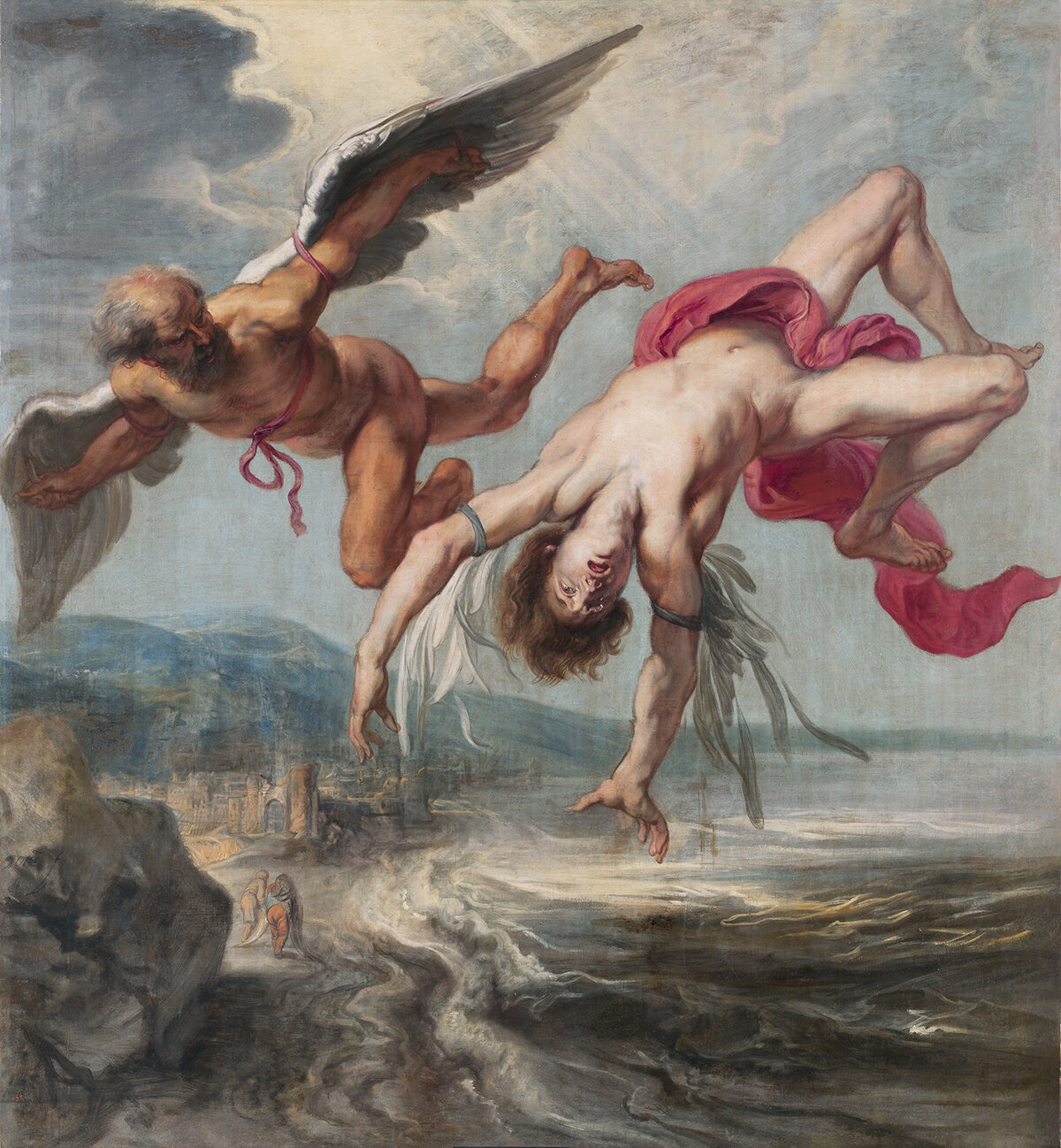
Daedalus and Icarus : A Parable of Human Flight
The oldest and most storied myth of human flight is the Greek myth of Daedalus and Icarus. Any history of flight, if tracked back far enough, will find it’s inception rooted in this timeless tale of youthful hubris. Over the centuries, the name Icarus has become synonymous with over-ambition, and has inspired countless other stories relating to human flight.

Anecdotes : Mountain Climbing and Verticality
I took the above photo on a recent hike up Mount Washington in the White Mountains of New Hampshire. I was at the Lake of the Clouds, which is a small pond near the summit. The ascent up the mountain brought me face-to-face with some of the most breath-taking and unforgiving landscapes I’ve ever experienced. It was an intensely personal experience, and I still find myself struggling for the words to describe my feelings throughout the climb. It also helped me to understand a few aspects of the human need for verticality, and I’ll explore them in the following paragraphs.
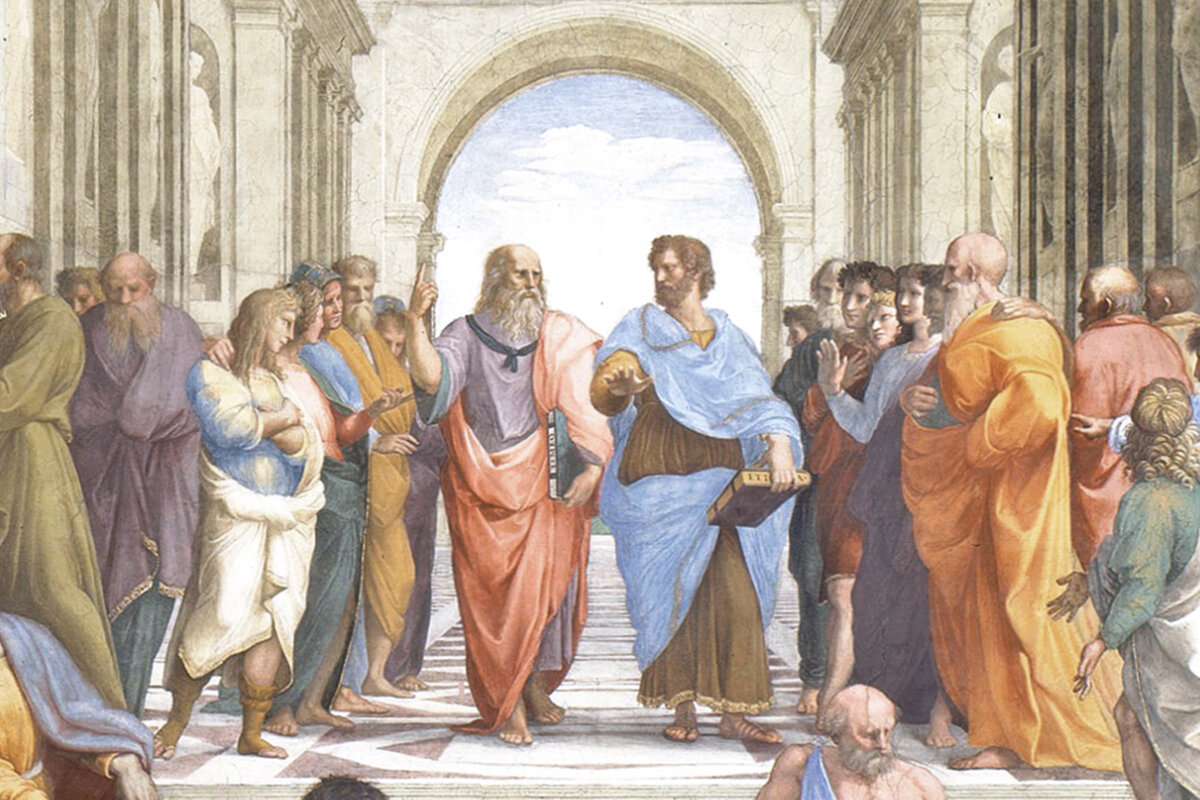
Raphael’s School of Athens and The Duality of Verticality
One of Raphael’s most famous works is his School of Athens fresco at the Stanze di Raffaello in the Vatican. The painting, completed in 1511, shows key historical figures of philosophy, with Plato and Aristotle located at the center (pictured above). The two central figures are in dialogue about their respective beliefs, with Plato pointing up toward the sky and Aristotle holding his hand down, gesturing toward the space around them. This duality of gestures runs core to the field of philosophy, and it also runs core to the theory of Verticality.
“A skyscraper is the incarnate rebellion against the supposedly unattainable; against the mystery of altitude, against the otherworldliness of the cerulean.”
-Joseph Roth, Austrian journalist and novelist, 1894-1939
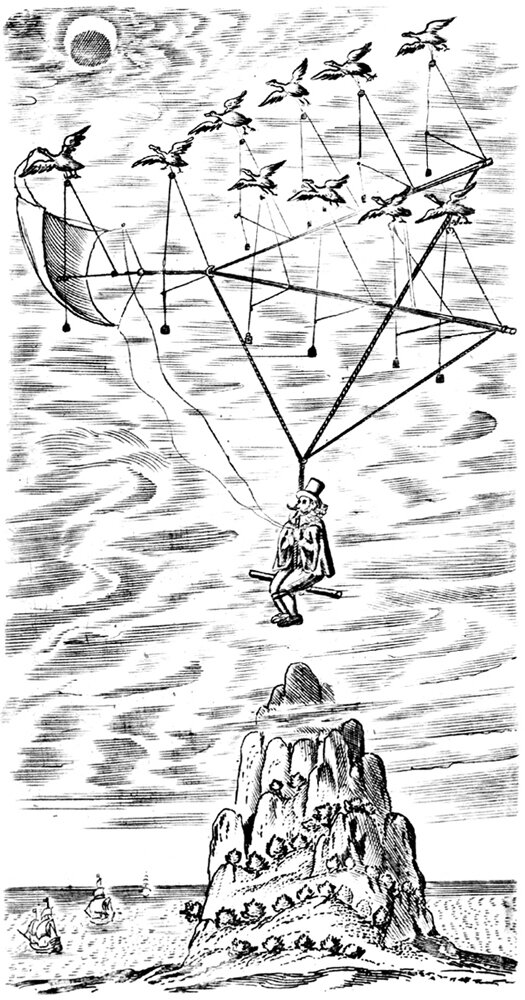
The Man in the Moone
Pictured here is the frontispiece to Francis Godwin’s 1657 book The Man in the Moone. The story is an adventure tale about Domingo Gonsales, a Spaniard who builds a flying machine while stranded on an island. The machine is powered by a flock of large swans, held together by a wooden skeleton with a simple seat at the base for Domingo to sit. From this simple perch, Domingo flies to the Moon and back, among other travels throughout the story.
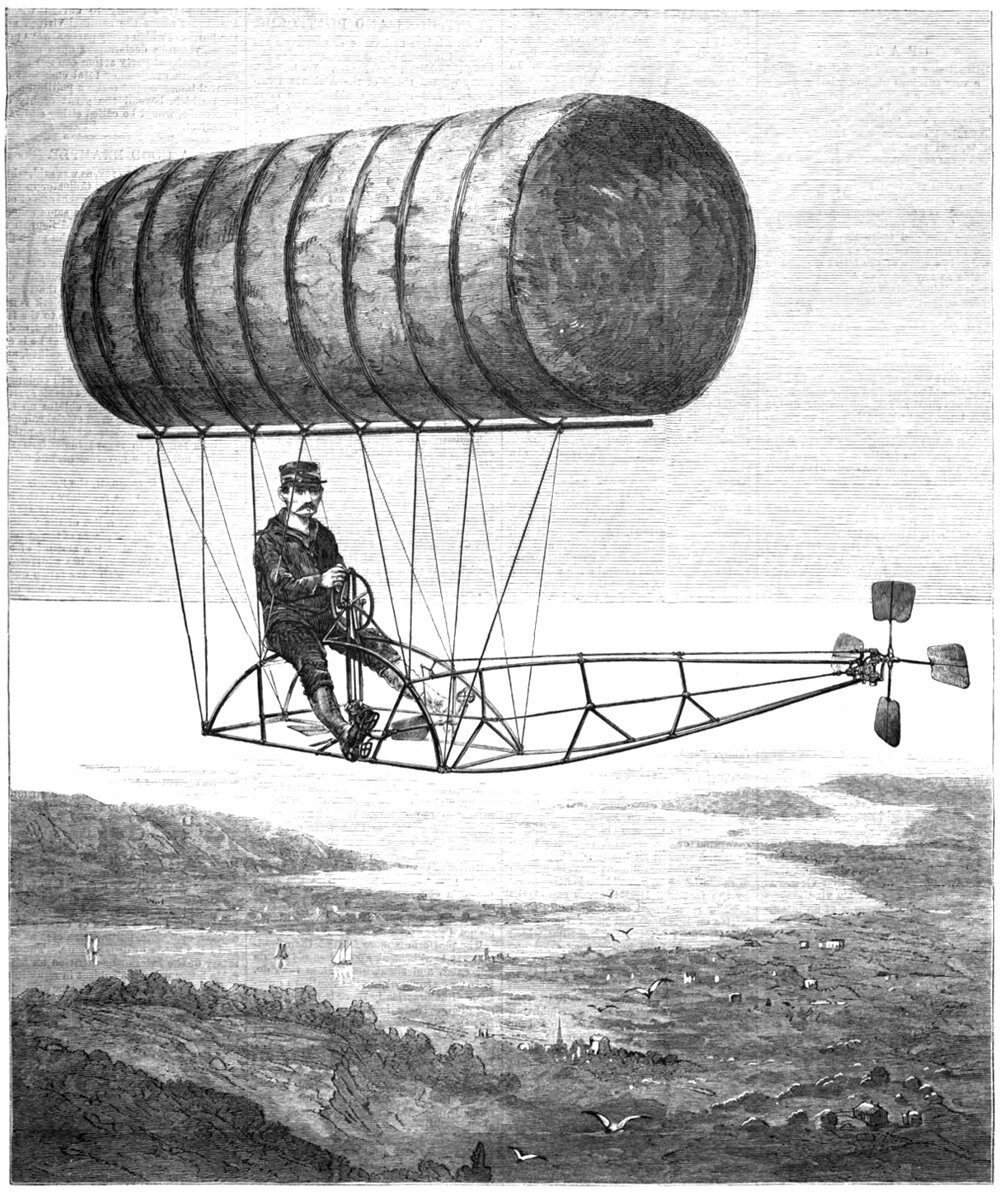
Charles F. Ritchel's Dirigicycle
This is the cover of Harper’s Weekly from July 13th, 1878. The issue featured an etching of a man sitting on a tubular frame, suspended high in the air by what looks like an elongated bail of hay. The man pictured is Charles F. Ritchel, and he’s piloting his design for a dirigible. A dirigible is an airship capable of being steered (it comes from the Latin word dirigere, which means ‘to direct’), and the bail of hay is in fact a bag of rubberized fabric called ‘gossamer cloth’, filled with hydrogen gas.

Liftoff and the Freedom of Flight
Flight has captivated humanity since pre-history. The space above our heads represents freedom, and flying through it represents an escape from our surface-based lives. To fly is to break free of the shackles of a surface-based existence and achieve a higher level of being.
"The desire to fly is an idea handed down to us by our ancestors who ... looked enviously on the birds soaring freely through space ... on the infinite highway of the air."
-Wilbur Wright, inventor and aviation pioneer, 1867-1912
"For my part I know nothing with any certainty, but the sight of the stars makes me dream."
-Vincent van Gogh, Dutch impressionist painter, 1853-1890
